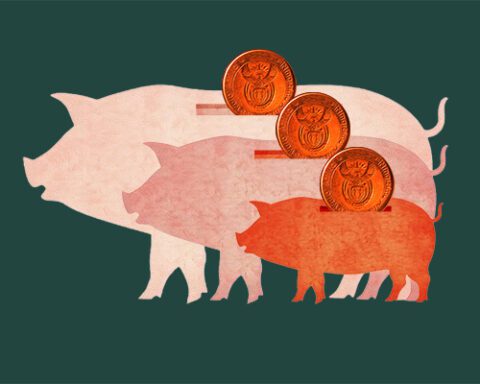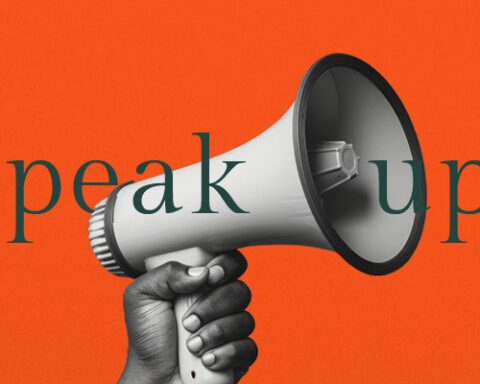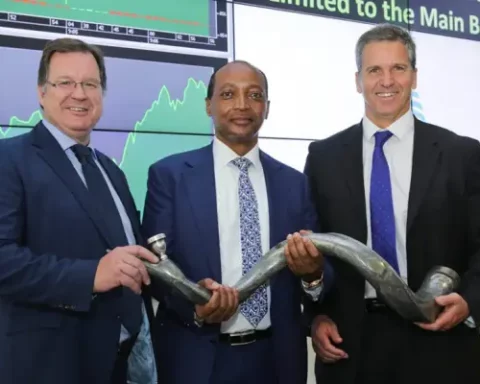Investing is a serious business. Well, quite serious. Often serious. And sometimes … just wild. Can it be a terrible thing to have a few stocks in your portfolio that are just crazy? If you lose, what did you expect, really. But if you win, you are a genius. Here are a few stocks that are definitively not for the widows and orphans. Tread carefully … especially among the crocodiles.
Padenga Holdings Limited (PHL.VX)
You may have missed that the Victoria Falls Stock Exchange (VFEX) launched in October 2020. This alternative to the main Zimbabwe Stock Exchange sets itself apart because it operates in US dollars – an obviously more stable bet than the crazily volatile local currency options.
Padenga is one of the companies listed on this burgeoning bourse, and it’s my wild card pick in more ways than one.
The company is a mega supplier of Nile crocodile skins to the global luxury market, and a decade ago it diversified into local gold mining too. So, right up a luxury lover’s alley and a sound pick as gold prices continue to fly.
Glamour aside, the original croc-skin business was spun out from Zimbabwe’s manufacturing and consumer staple behemoth Inscorr, and Inscorr founder Michael Fowler is Padenga’s group CEO.
True, the demand for these reptilian coverings has weakened globally, but the addition of the gold business has helped mitigate this.
At the end of June last year, the group reported a 33% increase in revenue to $99.24m, with its gold mining arm doing better than ever. This translated into an after-tax profit of $9.25m – a 73% increase from the same period the previous year.
If investing is partly about identifying great companies trading at far less than they should because of wider contextual issues, then there are a few in Zimbabwe that hit that mark. And Padenga is right up there. – Sarah Buitendach
Anglo American Platinum (AMS:JSE)
Going in on a buy for Anglo American Platinum (Amplats) is my wild card pick. Amplats’s share price tumbled 41% last year, worse than Northam’s 29% decline. Impala Platinum was little changed, while small-cap Eastern Platinum surged 150% – though, for context, that jump was from about 60c.
Analysts are lukewarm toward the stock at best, with Market Screener showing one “buy”, five “hold” and two “sell” recommendations between eight analysts. Platinum prices have weakened for two consecutive years, dropping about 12% to $950 per troy ounce as of Friday.
However, a projected deficit – the largest in a decade – might finally result in higher prices. Citigroup expects the price could rise to $1,100 this year, while JPMorgan predicts $1,200 per ounce in 2025. Metals trader Heraeus Precious Metals is a little more cautious, predicting a rather wide range of $850-$1,220 for platinum.
The World Platinum Council forecasts the supply shortfall will continue for the next four years, with stockpiles above ground needing to fill the gap. Demand from automakers for catalytic converters is projected to hold steady, while China’s appetite for platinum bars and coins is expected to offset investment declines from exchange-traded funds.
Amplats’s share price has rebounded 13% from a four-year low in September, and the recovery comes despite pressure from parent Anglo American’s share sell-offs at a discount, part of a broader plan to reduce its controlling stake and demerge Amplats in 2025.
Of the platinum miners, Amplats boasts one of the lowest-cost operations. While risks from the Anglo demerger loom large, separating from its parent allows Amplats the freedom to allocate capital more in tune with its needs.
I see the potential for Amplats to thrive once it steps out from under Anglo’s wing. Sometimes, launching from the safety of home is exactly what’s needed to fly, despite the risks. – Vernon Wessels
Embraer (EMBR3:SAO)
The colossal stock market gains already racked up by this Brazilian aircraft manufacturer are why I’m picking this with some trepidation. Can we go back a year, please? But Embraer, the world’s third-largest civil aircraft producer, is in a market where airlines simply cannot get enough of the product that it – and the dominant twins Airbus and Boeing – is selling.
According to stats from the International Air Transportation Association (IATA), the civil aircraft industry made 30% fewer airliners than projected in 2024, while projections for 2025 look as bad, or even worse. A recent report from Bloomberg Intelligence indicates that 466 fewer narrow-body craft were built than planned from mid-2022 to the beginning of 2023, with the deficit expected to rise to more than 1,100 by 2026, if supply-chain issues aren’t sorted out.
Boeing and Airbus rule the airwaves with their wide-body, long-haul craft, but neither company – Boeing in particular – is meeting order targets. While Embraer simply doesn’t have the cash to get into the fray to compete directly with the duopoly in terms of long-haul large planes, its aircraft are regional workhorses; its latest model, the E195-E2 can carry up to 146 passengers, for example.
As of its third-quarter results for 2024, Embraer’s full-year revenue forecasts were unchanged at between $6bn and $6.4bn, with an earnings before interest and tax margin of between 9% and 10% (up from 6.5% to 7.5%), and free cash flow of $300m. Its order backlog was more than $22.7bn – a new record.
The IATA meanwhile expects the airline industry to hit a historic milestone with revenue of more than $1-trillion this year, industry-wide net profit of $36.6bn, and a record 5.2-billion passengers set to fly.
Embraer CEO Francisco Gomes Neto told the Financial Times last year that airlines “are using the E2s to open new routes, to offer a higher frequency of flights for passengers”. Embraer is also a play on defence, with its light attack planes and transport aircraft. – Giulietta Talevi
JBS (JBSS3:SAO)
JBS, listed on the Sao Paolo stock exchange, is the world’s largest meat producer. It pipped its five-year high in early December following news that EU Commission president Ursula von der Leyen had confirmed the EU-Mercosur trade agreement after 25 long years of seemingly pointless negotiations.
Von der Leyen, who has taken to behaving not only as though she has immense authority but is leading a united Europe, decided someone had to take a stand for global trade. And so, in the first week of December she flitted off to Montevideo to sign the agreement with the presidents of Argentina, Brazil, Paraguay and Uruguay.
The agreement creates a market of more than 700-million consumers and by some estimates could enable Brazil to at least double its meat exports to the EU. This would be very good for JBS, which is a dominant player in agrifoods in that country.
Unfortunately for Von der Leyen, and JBS shareholders, it’s not quite a done deal. The agreement needs to be ratified by the EU member states. And it turns out there’s a reason why, after 25 years of negotiations, there’s no sign of any trade restrictions being lifted.
While France, Poland and Ireland have been vehemently opposed to the agreement, many other members have expressed concerns. That the negotiations have dragged on despite vociferous opposition is largely due to Germany’s support for the agreement. And given the squeeze on trade with China and the US, the prospect of four largely unrestricted South American markets is certain to drive continued support from export-dependent Germany.
If ratified, the agreement is likely to result in further weakening of the EU bloc, given France’s Marine le Pen and Poland’s Donald Tusk’s loudly expressed opposition.
It turns out opposition is not just coming from farmers. There are some serious concerns about the environmental conditions under which massive volumes of meat are produced in South America.
And then there’s the rather worrying issue of corruption that seems never very far from JBS.
All of which is why it’s difficult to classify JBS as anything more than a wild card. – Ann Crotty
Anglo American (AAL:LSE)
You wouldn’t necessarily think that Anglo American, a venerable aristocrat of South Africa’s corporate sector created by Ernest Oppenheimer in 1918, would constitute any real kind of “wild card” investment.
And yet, it is a company in a moment of some vulnerability that will determine whether it will take the high road or low road over the next decade.
This is because CEO Duncan Wanblad is on the clock to produce some serious value for investors, and has promised to deal with Anglo’s trickiest assets before the end of this year. So, we’re likely to see the plan implemented to sell diamond producer De Beers – a solid move given the headwinds against diamonds – and unbundle its platinum arm Amplats. That whole demerger process should pump a whole lot of cash into Anglo, $12bn according to some analysts.
But even absent that ordeal, which will inevitably take longer and be messier than anyone expects, Anglo still has an enviable portfolio of the most prized commodity on the planet right now: copper. Seen as a metal pivotal to the renewable energy transition, copper is required in vast amounts, not least to underpin the steep rise in wind power over the next few decades. Analysts say $700bn is needed in new investment to meet copper demand to 2050, and Anglo, with its stakes in Collahuasi and Los Bronces in Chile, and Quellaveco in Peru, is already ahead of the game on this front.
Rather fabulously for investors, the downside risk is limited because if Wanblad fails to implement his plans, BHP Billiton and other global diversified miners are waiting in the wings to pounce if Anglo’s revival begins to flag.
BHP has served its six-month ban from mounting another offer, after its earlier takeover bid failed in May, and the prospect of BHP’s re-emergence hangs heavy over Wanblad’s head.
Officially, the 16 analysts who cover the stock believe it will rise about 12% in the coming year – but if the chips fall as Wanblad wants them to, or if another suitor emerges, Anglo could do far better than that. – Rob Rose
MicroStrategy (MSTR:NSQ)
If you are going to go absolutely nuts, it’s pointless going halfway. So what about a loss-making, bitcoin-buying company that does little else other than raise debt to buy bitcoin? MicroStrategy is the ultimate bitcoin bull, and 2024 was so successful for the company, it decided to double down.
Though … can you actually double down on a strategy that involved doubling down in the first place? Every sensible professional investor will tell you to stay away from MicroStrategy. But can you really ignore a 438% one-year gain?
So … about that doubling down. In June 2024, MicroStrategy completed an $800m offering of convertible senior notes, with a 2.25% interest rate and maturing in 2032. It then bought bitcoin with that offering. Effectively what is happening here is that shareholders are getting leverage exposure to bitcoin’s price. So why don’t investors just borrow and buy bitcoin themselves? Well, because by buying MicroStrategy, you get the leverage without having to raise, and manage, the debt yourself – and it is happening in the company at a level most ordinary humans could not reach.
But why would you want to be leveraged to the bitcoin price? Because, in theory, 2025 is the year bitcoin goes mainstream. What the crypto bros want from the Trump administration is a crypto-friendly regulatory framework and the establishment of a strategic bitcoin reserve. And some other things. And they might just get it. And if they do, 2025 will be even better for MicroStrategy than 2024.
Or they could go broke. They are currently losing money. Did I mention that? – Tim Cohen
ALSO READ: Nothing better than home brew: Local stocks to consider for 2025
ALSO READ: It’s a wild world: International stocks Currency staffers suggest you examine for 2025
Sign up to Currency’s weekly newsletters to receive your own bulletin of weekday news and weekend treats. Register here.









